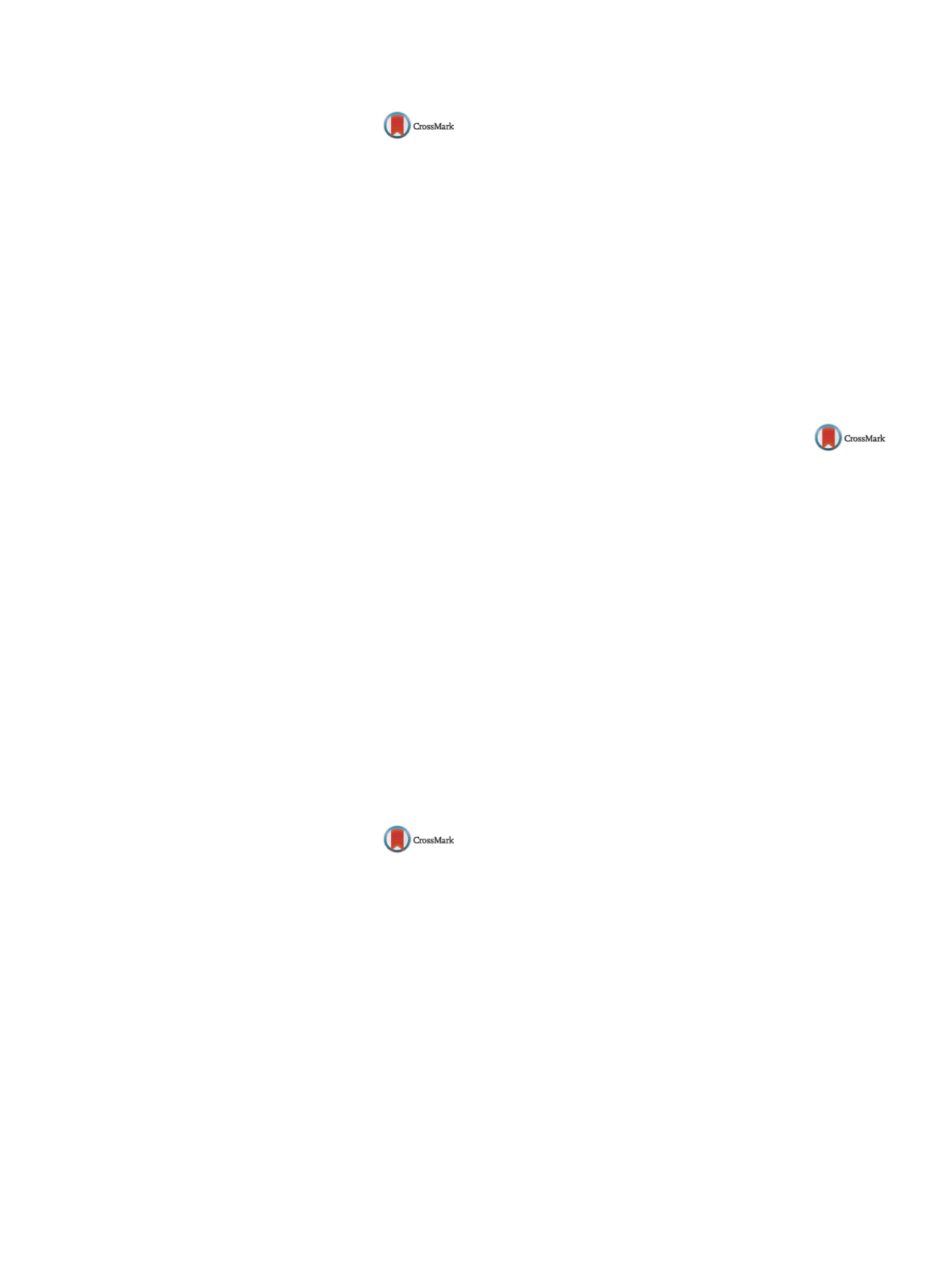

S142
25th European Congress of Psychiatry / European Psychiatry 41S (2017) S106–S169
EW0109
Mood disorders in elderly patients
hospitalized for acute exacerbation of
COPD
I. Bonfitto
1 ,∗
, G. Moniello
2, M. Pascucci
1, A. Bellomo
11
University of Foggia, Department of Mental Health ASL-FG-SPCD,
Foggia, Italy
2
Azienda Ospedaliera-Universitaria “Ospedali Riuniti”, Operative
Unity of Geriatry, Foggia, Italy
∗
Corresponding author.
Introduction
Chronic obstructive pulmonary disease (COPD)
represents the most common cause of chronic respiratory fail-
ure and it’s associated with several comorbidities such as
depression. Depression is about four times more frequent in
elderly patients with COPD compared to peers who are not
affected and its prevalence increases with the degree of disease
severity.
Objective
To assess mood and perception of the quality of life in
elderly patients hospitalized for acute exacerbation of COPD.
Methods
Thirty-five elderly patients hospitalized for reactivation
of COPD were examined; they were subjected to spirometry test
for the calculation of FEV1 and to COPD Assessment Test (CAT)
and Hamilton Rating Scale for Depression (HAM-D) to evalu-
ate impact of COPD on patients’ quality of life and depressive
symptomatology, respectively. The number of COPD exacerba-
tions in the last year prior to hospitalization and the number of
recovery days required for the stabilization of patients were also
recorded.
Results
There were strongly significative correlations (
P
< 0.001),
positive between HAM-D scores, CAT scores, number of exacer-
bation in the last year and hospital length of stay and negative
between HAM-D scores and FEV1 values. Furthermore, females
were more depressed, with lower FEV 1 (
P
= 0.043) and with a
longer length of stay (
P
= 0.039) as compared to males.
Conclusions
A greater severity of depressive symptoms is related
to a greater severity of COPD exacerbations, disability associated
with it and perceived by the patient, as well as a higher number
of recovery days and annual acute exacerbations, particularly in
female gender.
Disclosure of interest
The authors have not supplied their decla-
ration of competing interest.
http://dx.doi.org/10.1016/j.eurpsy.2017.01.1978EW0110
Cortisol awakening response and
depression in acute coronary
syndrome patients
V.M. Buonomenna
1 ,∗
, F. Marciello
1, V. Caivano
1, G. Cascino
1,
G. D’Agostino
1, D. Nunziata
1, P. Monteleone
21
Seconda Università di Napoli, Department of Psychiatry, Naples,
Italy
2
University of Salerno, Faculty of Medicine, Department of
Psychiatry, Salerno, Italy
∗
Corresponding author.
Introduction
Although the available evidence strongly supports
an association between depression and coronary heart disease
(CHD), the possible biological link between these two conditions
still remains to be clarified. The hypothalamus-pituitary-adrenal
(HPA) axis is the main endogenous system mediating the stress
response and changes in cortisol secretion have been associated
with depressed mood in patients with CHD. Therefore, the study
of the correlation between cortisol levels and depressed mood in
acute coronary syndrome (ACS) patients could help to clarify the
nature of the relationship between ACS and the risk to develop a
depressive syndrome.
Objective
We aimed to explore the relationships between HPA
axis activity and depressed mood in ACS patients.
Aims
The purpose of this study was to determine whether the
cortisol awakening response (CAR) is associated and/or predict
depressive symptoms in patients with an ACS.
Method
Patients admitted to an ACSwardwere asked to fill in the
Beck Depression Inventory (BDI) and to collect saliva samples in the
morning to measure their CAR. All the procedures were carried out
within 1 week after an ACS. Patients were asked again to fill in the
BDI six months after their ACS.
Results
A lower CAR was associated with higher BDI scores after
6months from an ACS.
Conclusions
Our preliminary results suggest that hypoactivity of
the HPA axis in the first week of an ACS may predict more severe
depressive symptoms after 6 months from the ACS.
Disclosure of interest
The authors have not supplied their decla-
ration of competing interest.
http://dx.doi.org/10.1016/j.eurpsy.2017.01.1979EW0111
Rewarding network mechanism of
left orbito-frontal cortex transcranial
magnetic stimulation in depression
Q. Dai
1 ,∗
, Y. Xuntao
2, F. Zhengzhi
31
Third Military Medical University, Department of Nursing
psychology, Chongqing, China
2
Third Military Medical University, Radiological department, the
Southwest Hospital of the Third Military Medical University,
Chongqing, China
3
Third Military Medical University, Department of psychology,
Chongqing, China
∗
Corresponding author.
Objective
The difficulties in the clinical antidepressant treatment
lead to the pursuing of more effective methods such as transcranial
magnetic stimulation (TMS). Mixed findings from DLPFC targeted
TMS result in the exploration of optimal stimulation location. Dis-
turbed function of obitofrontal cortex (OFC) has been indicated
in depression, which is involving in the remission of depression.
However, whether it could be a more specific treating target is not
tested. Simultaneously, disturbed reward network (RN) has been
confirmed in depression, however, whether this could be improved
by TMS treatment remains unclear.
Methods
Fourteen patients with major depressive disorder
(MDD) were allocated in a four-week course of OFC targeted TMS.
Motivated by the literature, before and after the treatment, the
function connectivity of RN with the seed of ventral striatum was
conducted. The results were also compared with the data from 33
healthy controls.
Results
The OFC targeted TMS improved the clinical depression
significantly and enhanced the function connectivity within the RN
effectively. Specifically, lower baseline dorsolateral striatum con-
nectivity predicted strong therapeutic effect of TMS on depression,
while lower baseline insula connectivity predicted weak therapeu-
tic effect on depression.
Conclusions
The findings offer the first experimental evidence of
the therapeutic effect of OFC targeted TMS on clinical depression,
enhanced function connectivity within RN might be the potential
neural mechanism
( Fig. 1 ).Lower dorsolateral striatum connection
might be a reliable neural biomarker of strong responding for TMS
treatment, which helps to identify the patients who will be cured
by TMS most effectively.


















